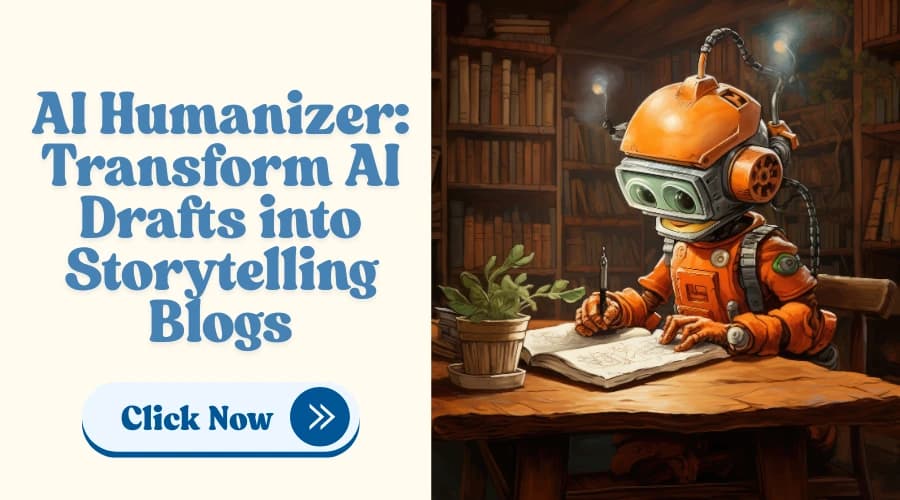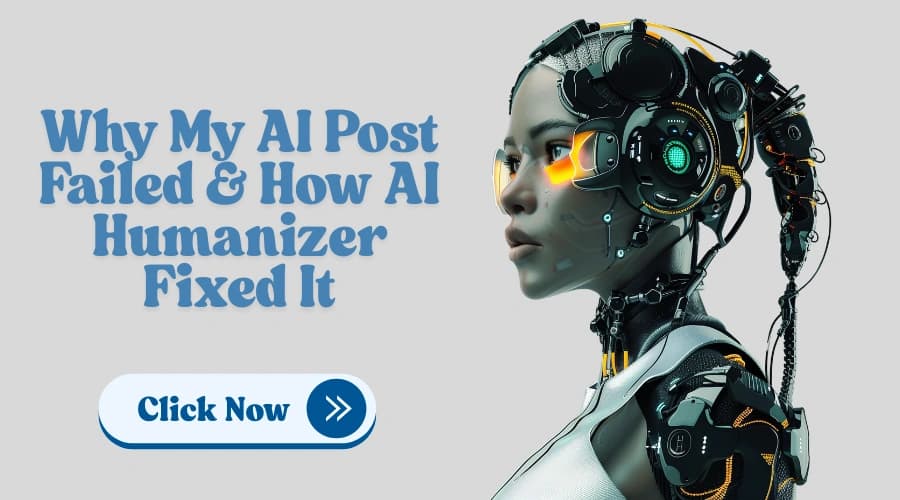AI tools have changed the game in schools and workplaces. Students use them to organize research, professionals to draft reports, and content creators to come up with ideas faster. But as more people rely on AI, new challenges pop up, like AI detection tools. Programs like Turnitin’s AI detector, GPTZero, and ZeroGPT help universities and employers spot text that seems machine-made.
What these tools look for is a lack of human touch. Even if your ideas are original, the writing might feel too uniform, predictable, or robotic, traits often linked with AI. Unfortunately, these detectors focus more on how something is written than why, which means projects can get flagged even when AI was used responsibly or just a little.
Is It Fair to Get Penalized for Using AI Wisely?
You use AI just to outline your thoughts, polish a few sentences, or beat writer’s block. You then edit it heavily. But your work still gets flagged. You wonder, “If I only used AI to organize my ideas, shouldn’t it still be my original work?”
The truth is, the switch between AI to human text isn’t always smooth. Even careful, limited AI use can leave its signs, like overly logical sentences or a lack of emotional depth. This is especially true in academic and professional writing, where tone and information matter. The problem isn’t using AI; it’s that AI detection tools can’t always tell the difference.
Why Simple Rewrites Often Don’t Work
Many try to beat the system by paraphrasing or making small changes. But changing a few words doesn’t hide the patterns AI detectors spot. It’s the structure, flow, and rhythm that give AI text away.
Most AI detectors are trained to find these robotic signs, so just swapping words won’t cut it. Making AI content sound human means more than replacing synonyms; it requires reshaping how ideas are expressed. Basic paraphrasing tools often fail here because they just cover up the text rather than truly humanize it. And that’s still easy to detect.
What Makes Writing Sound Human?
Human writing has small but powerful touches: varied sentence lengths, tone changes to show emotion, and culturally relevant phrases. These add warmth, depth, and real-life experiences.
AI writing usually misses this. It’s too formal, too perfect, or too structured. It lacks the emotional and contextual details that make your writing sound like you. Detection tools check not just for copied content but also how closely your writing matches real human style. So, humanizing AI text, you need more than editing; you need a tool that can reshape meaning while keeping your voice.
How AI Humanizer Pro Helps
AI Humanizer Pro is your ultimate saviour. It’s made to cover the gap between helpful AI tools and strict AI checkers. Using advanced natural language processing algorithms and knowledge of writing styles, it turns AI-generated text into natural, smooth, readable writing that’s less likely to get flagged.
The Humanizer tool doesn’t just reword; it recreates. It keeps your ideas while rewriting the tone, structure, and authenticity to pass modern AI checkers. If you’ve ever worried about using AI in your work, this tool helps you use it safely and ethically.
How It Works for You
AI Humanizer works with your content, not against it. First, it keeps your original meaning and voice, improving how your writing flows. This is key for academic work, where tone and accuracy matter. You can choose tones like formal, casual, academic, or conversational so your writing fits the situation.
Second, it understands how AI detection works. It connects with popular AI checkers like Turnitin, GPTZero, and Originality 3.0 so you can check your work in real-time. It shows you scores, readability, and what was changed, unlike other tools that just give you a new draft without any information.
Third, it’s mobile-friendly, perfect for students on the move. You can upload files, paste text, or even shorten or expand your writing right in the app. With features like Zero AI Mode, it boosts humanization for strict detectors without losing your original message.
Real Use, Real Difference
Let’s imagine a simple example. A student submits this original, AI-assisted draft:
"AI tools improve assignment writing by saving time. Many students use them because they are efficient."
It’s informative, but sounds robotic. The sentence structure is flat, and there’s no emotional appeal or stylistic variation.
Now, here’s what AI Humanizer Pro transforms it into:
"Students are increasingly turning to AI tools to streamline their assignments, not just to save time but to better organize their thoughts. These technologies, when used responsibly, offer a valuable edge in academic performance."
Same idea, but the tone and flow feel natural, balanced, and more like real student writing. That’s the difference Humanizing AI can make.
Still Think AI Tools Can’t Be Trusted?
It’s easy to be skeptical, especially if you’ve had a bad experience. But AI Humanizer isn’t just another rewriting tool; it’s a writing assistant that respects your original work. It doesn’t erase what the AI helped you start; it shapes it for real-world acceptance.
In a time when even ethically used AI content gets flagged, trust matters. And this tool builds that trust by giving you full control over the output, real-time feedback, and the confidence that your work won’t be rejected simply because of how it sounds.
Try It Before You Regret Another Rejection
If you're tired of editing and re-editing your drafts, only to still get flagged or questioned, it’s time to make a change. AI Humanizer Pro is free to try, simple to use, and powerful enough to make a real difference. Test a paragraph today, see how your content transforms, and finally submit with peace of mind.
No more guesswork. No more fear of rejection. Just content that feels right, because it is right.
Read More
1. Emerging trends in AI content detection and humanization
2. The Impact of AI on the Future of Academic Writing and Research
3. SEO Strategies to Maximize Organic Traffic Results with an AI Humanizer






